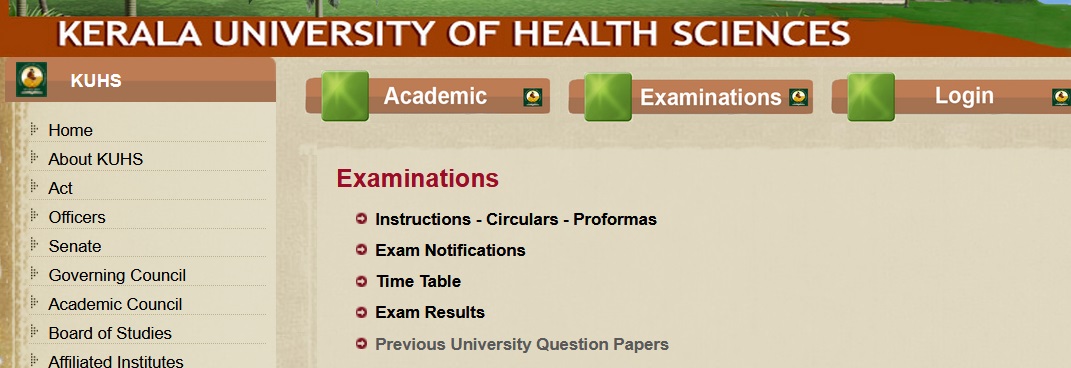Critical Care Nursing M.Sc Question Paper : kuhs.ac.in
Name of the University : Kerala University of Health Sciences
Degree : M.Sc Nursing
Subject Name : Clinical Specialty – II
Year : II
Document Type : Model Question Paper
Website : kuhs.ac.in
Download Model/Sample Question Paper :
November 2012 : https://www.pdfquestion.in/uploads/kuhs.ac.in/3445-1-Critical%20Care%20Nursing.pdf
May 2013 : https://www.pdfquestion.in/uploads/kuhs.ac.in/3445-2-Critical%20Care%20Nursing.pdf
KUHS Critical Care Nursing Question Paper
Second Year M.Sc Nursing Degree Examinations – November 2012
Clinical Specialty – II :
Medical Surgical Nursing :
Sub Specialty: Critical Care Nursing
Time: 3 hrs
Max marks : 100
Related : KUHS Nursing Management M.Sc Question Paper : www.pdfquestion.in/3450.html
Answer all questions :
Essays : (4×20=80)
1. Explain the pathophysiology and medical and nursing management of a patient with acute renal failure. (5+8+7 = 20)
2. Mr. M, 40 years old, sustained 40% burns and admitted in the burns unit two hours after injury. Discuss in detail the pathophysiology, medical and nursing management of burns. (5+8+7 = 20)
3. Mr. X, 60 years old, admitted in the coronary care unit with acute anterior wall myocardial infarction (Ml). Explain the pathophysiology, medical and nursing management of acute Ml. (5+8+7 = 20)
.4. Discuss in detail the causes and pathophysiology and the nursing management of acute respiratory distress syndrome. (5+8+7 = 20)

Short notes : (4×5=20)
5. Pathological jaundice in neonates
6. Postpartum hemorrhage
7. Nursing audit
8. Acquired immune deficiency syndrome
May 2013
Medical Surgical Nursing :
Sub Specialty: Critical Care Nursing
Time: 3 hrs
Max marks : 100
Answer all questions :
Essays : (4×20=80)
1. Explain the pathophysiology, medical and nursing management of patient with diabetic ketoacidosis (8+6+6=20)
2. Explain the surgical and nursing management of a patient who had undergone CABG (10+10=20)
3. Describe the classification, pathophysiology and nursing management of patient with burns during the first 48 hours (5+7+8=20)
4. Mr. Suresh, 45 years old is admitted to the emergency unit with the complaints of dyspnea, headache, dizziness, confusion, hypotension, PaC02 <35 mmHg, Pa02 < 60, oxygen saturation< 90% and is indicative of respiratory failur,e. Describe the pathophysiological changes and nursing care plan. (10+10=20)
Short notes : (4×5=20)
5. Critical care psychosis
6. lntracranial hypertension
7. Principles of hemodialysis
8. Scope of critical care nursing
September 2013
Essays : (4×20=80)
1. Explain the classification of shock and mention the nursing management of patient hypovolemic shock (10+10=20)
2. Explain the pathophysiological changes in acute respiratory distress syndrome and the nursing management of a patient in mechanical ventilator (10+10=20)
3. Enumerate the ethical issues related to organ transplantation and mention the post operative nursing management of a patient who had renal transplantation (10+10=20)
4. Mention the principles of critical care nursing and how will you set up a critical care unit following the principles. (10+10=20)
Short notes : (4×5=20)
5. Methods of peritoneal dialysis
6. Role of nurse in infection control
7. Multiple organ failure syndrome
8. Cardiac monitoring
March 2014
Essays : (4×20=80)
1. Mrs. H, 65 years old, admitted in the critical care unit with severe status asthmaticus. Explain the pathophysiology, medical and nursing management of status of asthmaticus.
2. Explain the immediate post operative care of Mrs. S, who underwent coronary artery bypass graft and received in the intensive care unit. Discuss the pain management and postoperative complications. (10+10=20)
3. Explain the pathophysiology, medical and nursing management of a patient with head injury. (5+8+7=20)
4. Discuss in detail the pathophysiology, medical and nursing management of a patient with chronic renal failure. (5+8+7= 20)
Short notes : (4×5=20)
5. Management of pain in critically ill patients
6. Management of critical care psychosis
7. Preeclampsia
8. Organ donation
September 2014
Essays : (4×20=80)
1. Mrs. Neenu 30 years is admitted to the burns unit with 80% kerosene oil burns. Classify burns and plan nursing care for this patient for the first 48 hours (10+10=20)
2. Describe the causes and nursing management of post-partum hemorrhage (10+10=20)
3. List the causes, risk factors and describe the pathophysiological changes in a patient admitted with pneumonia. (5+5+10=20)
4. Describe the various types of arrhythmias and enumerate the role of a nurse in handling a patient with atrial fibrillation (15+5=20)
Short notes : (4×5=20)
5. ABG analysis
6. Do not resuscitate (DNR)
7. Principles of critical care nursing.
8. Stages of shock
Cardio Vascular & Thoracic Nursing :
Essays :
1. Discuss the pathophysiology, clinical manifestations, diagnostic studies and the management of infective endocarditis. (4+5+5+6=20)
2. Enumerate the indications for mechanical ventilation. Differentiate between continuous mandatory ventilation and intermittent mandatory ventilation. Describe the complications of mechanical ventilation. Mention the nurse’s responsibilities in weaning a patient from mechanical ventilation. (4+4+8+4=20)
3. Describe the different types of heart block. Enumerate the indications for permanent pacemaker implantation (PPI). Explain the nursing management of a patient for the first twelve hours after PPI (6+4+10=20)
4. Describe the etiology and pathophysiology of bronchial asthma. Explain the medical management. Prepare a nursing care plan based on nursing process of a patient with acute asthma (3+4+5+8=20)
Short notes :
5. Cardioversion
6. Digitalis
7. Exercise testing
8. Cardiac transplant